Emotional Eating: Powerful Ways to Break the Cycle

INTRODUCTION
Eating for comfort, often called emotional eating, is a common experience that affects people of all ages and backgrounds. It means turning to food not because you are physically hungry, but to cope with feelings like stress, sadness, boredom, or even happiness. This behavior can be triggered by daily pressures, major life changes, or simply by habits learned over time. For many, food becomes a way to find relief, distraction, or a sense of control when emotions feel overwhelming.
Emotional eating is not just about negative feelings. Celebrations, rewards, and social gatherings can also lead to eating for comfort, even when you are not hungry. The foods chosen are usually high in sugar, fat, or salt, which can temporarily boost mood by triggering the brain’s reward system. However, this relief is short-lived and often followed by guilt, shame, or regret, creating a cycle that is hard to break.

Research shows that emotional eating is linked to both psychological and biological factors. Childhood experiences, such as being given treats for good behavior or comfort, can shape how you respond to emotions as an adult. Hormones like cortisol (released during stress) and dopamine (the “feel-good” chemical) play a role in cravings and eating habits. Social influences, such as family traditions or peer pressure, can also reinforce the habit.
Over time, eating for comfort can lead to overeating, weight gain, and health problems like diabetes and heart disease. It can also affect your mental well-being, leading to low self-esteem and increased anxiety or depression. Recognizing the difference between physical and emotional hunger, and understanding your personal triggers, is the first step toward building a healthier relationship with food.
Understanding the Triggers
Common Emotional Triggers
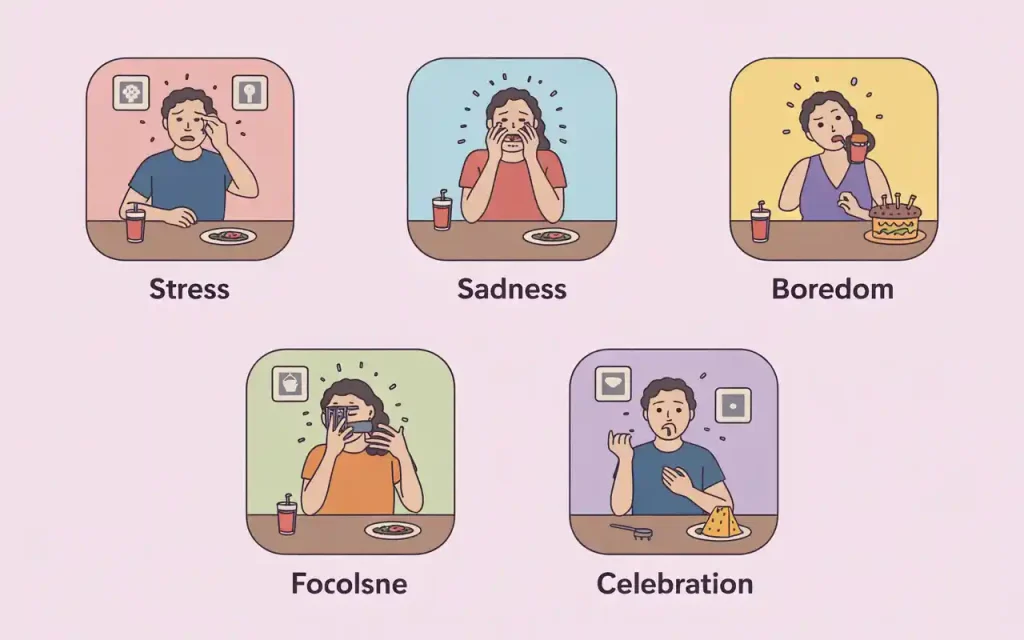
- Stress: When you’re under pressure, your body releases cortisol, a hormone that increases cravings for sugary or fatty foods. This is a natural response, but it can lead to unhealthy eating patterns.
- Sadness, Loneliness, or Anxiety: Food can act as a temporary friend or distraction from negative emotions. Many people turn to comfort foods like ice cream or chips when feeling down.
- Boredom: Eating can fill time and provide stimulation when you feel unoccupied or restless, even if you’re not hungry.
- Anger or Frustration: Food can be used to calm down or avoid dealing with tough feelings. Some people eat to distract themselves from conflict or emotional pain.
- Positive Emotions: Celebrations, rewards, and social gatherings often involve food. You might eat more at parties or treat yourself after a success, even if you’re not hungry.
Psychological and Biological Roots
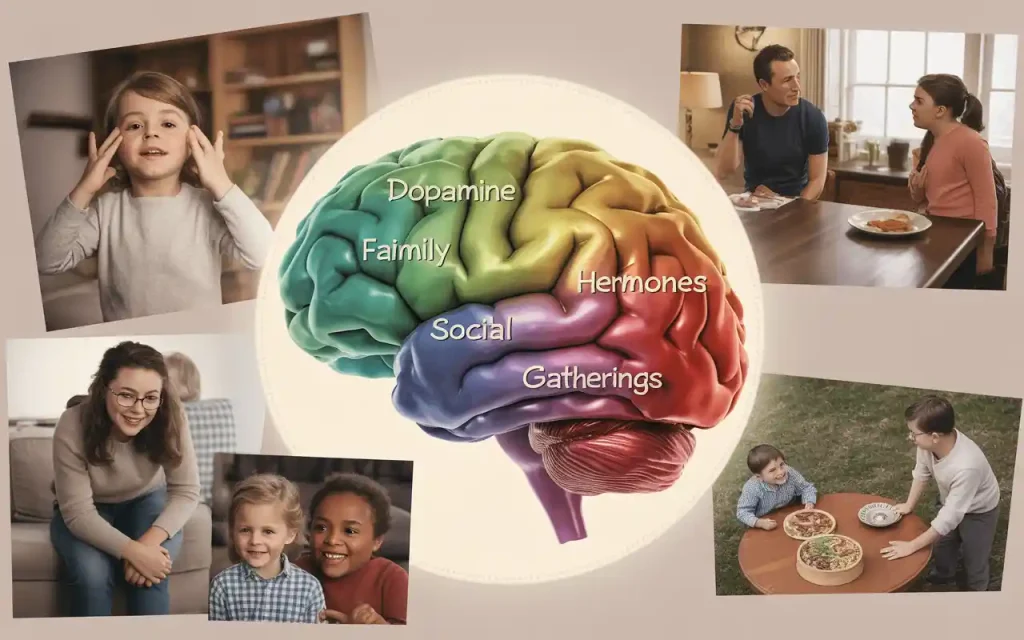
- Childhood Patterns: If you were given food as a reward or comfort as a child, you may use food the same way as an adult. These early habits can be hard to break.
- Brain Chemistry: Comfort foods trigger the release of dopamine, the “feel-good” chemical in your brain, making you want to repeat the behavior.
- Hormones: Imbalances in hunger hormones (like leptin and ghrelin) can make cravings worse, especially during stress or lack of sleep.
- Social Influences: Peer pressure, family habits, and cultural traditions can reinforce eating for comfort. For example, family gatherings may always involve large meals or desserts.
Environmental Triggers
- Availability of Food: Easy access to snacks at home, work, or social events can make it harder to resist eating for comfort.
- Advertising and Media: Constant exposure to food ads, especially for high-calorie treats, can trigger cravings even when you’re not hungry.
- Routine and Habits: Watching TV, working late, or driving can become linked with snacking, making it a mindless habit.
Signs and Symptoms
You might be eating for comfort if you:
- Eat when you’re not physically hungry, especially in response to emotions.
- Crave specific comfort foods (like sweets, salty snacks, or junk food).
- Eat quickly and mindlessly, often alone or in secret.
- Feel guilty, ashamed, or regretful after eating.
- Struggle to stop eating even when you feel full.
- Use food as a reward or to avoid dealing with problems.
- Notice that eating doesn’t actually solve the emotional issue, and the feelings return.
Physical vs. Emotional Hunger
| Feature | Physical Hunger | Comfort Eating Hunger |
|---|---|---|
| How it starts | Builds gradually | Comes on suddenly |
| Type of food wanted | Any food | Specific comfort foods |
| When it stops | Stops when full | Keeps eating past fullness |
| Eating speed | Normal pace | Often fast or rushed |
| Emotional state after eating | No guilt, satisfaction | Guilt, shame, regret |
| Physical cues | Stomach growling, low energy | No physical hunger signs |
| Timing | Regular meal times | Any time, often after stress |
| Awareness | Conscious of eating | Mindless, distracted eating |
| Social aspect | Often with others | Often alone or in secret |
| Satisfaction | Satisfied after eating | Still unsatisfied, craving more |
Effects on Health and Well-being
Physical Health
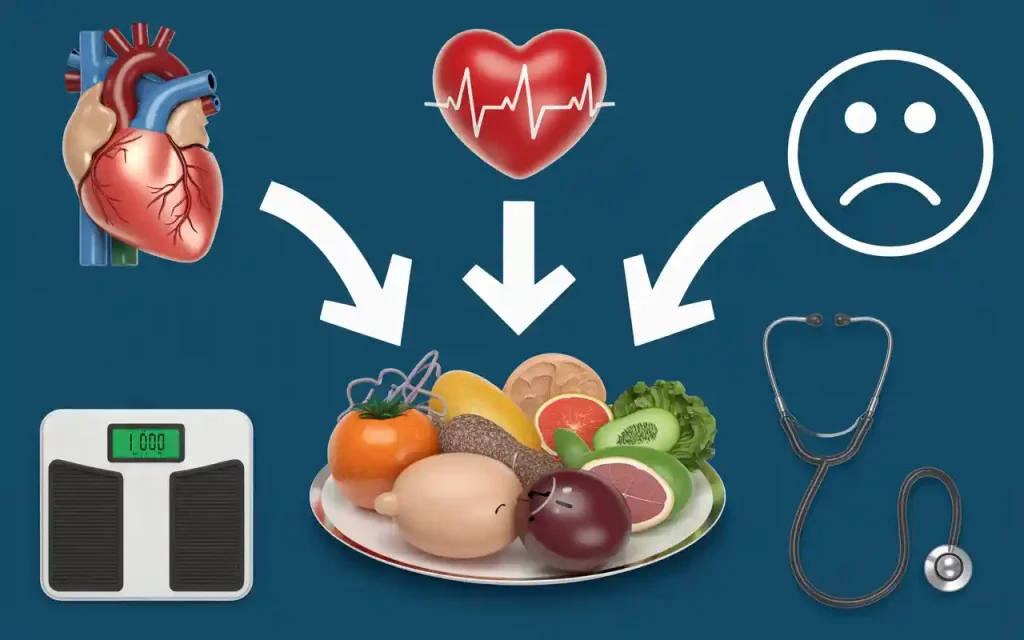
- Weight Gain: Eating for comfort often leads to overeating, especially high-calorie foods, which can cause weight gain and obesity over time.
- Digestive Issues: Overeating can cause stomach pain, bloating, nausea, and disrupt digestion.
- Chronic Diseases: Repeated comfort eating increases the risk of diabetes, high blood pressure, heart disease, and fatty liver disease.
- Sleep Problems: Eating late at night or consuming heavy foods can disrupt sleep patterns and make you feel tired during the day.
Mental and Emotional Health
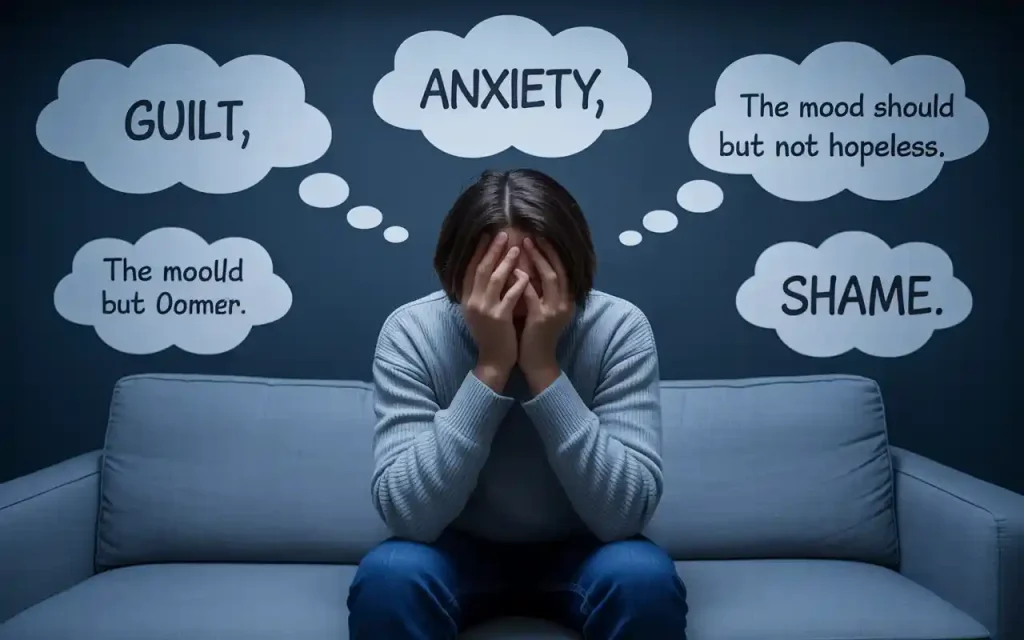
- Guilt and Shame: Many people feel bad about themselves after eating for comfort, which can lower self-esteem and increase stress.
- Anxiety and Depression: There is a strong link between emotional eating and mental health issues. The cycle of eating to cope, then feeling worse, can deepen anxiety and depression.
- Disordered Eating: Frequent comfort eating can develop into binge eating disorder or other eating problems, making it harder to control food intake.
Social and Lifestyle Impact

- Isolation: Eating for comfort is often done alone, which can increase feelings of loneliness and isolation.
- Reduced Enjoyment of Food: Mindless eating can make you less aware of flavors and satisfaction, reducing the pleasure of meals.
- Financial Impact: Regularly buying snacks, takeout, or comfort foods can add up and strain your budget.
How to Stop the Habit
Simple Steps to Take Control
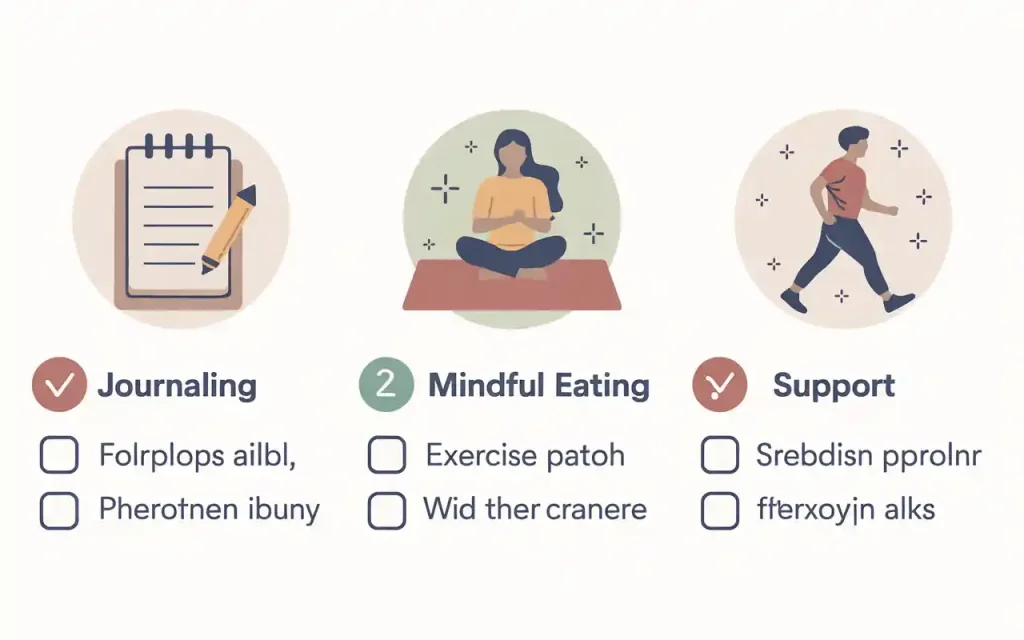
- Recognize Your Triggers
Keep a food and mood journal. Write down what you eat, when, and how you feel before and after eating. Over time, you’ll notice patterns that reveal your triggers. - Pause and Reflect
Before eating, ask yourself:- “Am I really hungry, or am I trying to soothe an emotion?”
- “What am I feeling right now?”
- “Is there another way to handle this feeling?”
This pause can help you make better choices and break the automatic link between emotions and eating.
- Find Healthy Alternatives
Replace eating with activities that comfort or distract you, such as:- Taking a walk or doing light exercise
- Calling or texting a friend
- Listening to music, singing, or dancing
- Practicing deep breathing, meditation, or yoga
- Doing a hobby, drawing, or organizing something
- Drinking a glass of water or herbal tea
- Writing in a journal or reading a book
- Eat Mindfully
- Slow down and focus on your food.
- Notice the taste, texture, and how your body feels.
- Put away screens and distractions during meals.
- Chew slowly and savor each bite.
- Check in with your hunger and fullness cues throughout the meal.
- Build a Support System
- Talk to friends, family, or join a support group.
- Share your feelings and experiences to reduce isolation.
- Ask for encouragement and accountability from people you trust.
- Practice Self-Compassion
- Be kind to yourself.
- If you slip up, forgive yourself and try again.
- Remind yourself that change takes time and patience.
- Celebrate small victories and progress.
- Stay Nourished
- Eat balanced meals at regular times to prevent blood sugar dips that can trigger cravings.
- Include protein, fiber, and healthy fats to keep you full and satisfied.
- Don’t skip meals, as this can make emotional eating more likely.
When to Seek Help

If eating for comfort feels out of control or leads to health problems, consider professional help:
- Therapy:
- Cognitive Behavioral Therapy (CBT) helps you change negative thought patterns and behaviors.
- Acceptance and Commitment Therapy (ACT) teaches you to accept emotions without acting on them.
- Mindfulness-based therapies help you become more aware of your feelings and eating habits.
- Support Groups:
- Joining a group can provide encouragement, accountability, and practical tools for recovery.
- Groups like Overeaters Anonymous or online communities can offer support and understanding.
- Medical Advice:
- If you have health issues related to comfort eating, talk to a doctor or dietitian for guidance.
- A professional can help you create a personalized plan and monitor your progress.
Prevention and Long-term Strategies

- Develop Emotional Awareness:
- Learn to identify and express your feelings in healthy ways, such as journaling, talking to someone you trust, or creative activities.
- Practice naming your emotions instead of ignoring or eating them away.
- Create New Habits:
- Replace comfort eating with positive routines, like regular exercise, creative hobbies, or relaxation techniques.
- Build a daily routine that includes self-care and stress management.
- Set Realistic Goals:
- Focus on progress, not perfection.
- Break big goals into small, manageable steps.
- Celebrate small victories and keep moving forward.
- Limit Temptations:
- Keep unhealthy snacks out of sight and stock up on healthy options like fruits, nuts, and vegetables.
- Plan meals and snacks ahead of time to avoid impulsive eating.
- Practice Stress Management:
- Use stress-reduction techniques like yoga, meditation, deep breathing, or spending time in nature.
- Find healthy outlets for stress, such as talking to a friend, exercising, or engaging in a hobby.
- Build a Positive Relationship with Food:
- Allow yourself to enjoy all foods in moderation, without guilt.
- Focus on nourishing your body and mind, not just controlling your weight.
Strategies to Break the Cycle
| Strategy | How It Helps | Example Actions |
|---|---|---|
| Food and Mood Journal | Identifies patterns and triggers | Write down meals, snacks, emotions |
| Mindful Eating | Increases awareness and satisfaction | Eat slowly, savor each bite |
| Healthy Distractions | Breaks the link between emotions and eating | Walk, call a friend, do a hobby |
| Support System | Provides encouragement and accountability | Join a group, talk to loved ones |
| Self-Compassion | Reduces guilt and shame, supports change | Forgive slip-ups, celebrate progress |
| Regular Meals | Prevents extreme hunger and cravings | Eat balanced meals on a schedule |
| Stress Management | Lowers emotional triggers | Practice yoga, meditation, deep breaths |
| Professional Help | Offers expert guidance and support | See a therapist, dietitian, or doctor |
| Limiting Temptations | Reduces impulsive eating | Keep healthy snacks, avoid junk food |
| Emotional Awareness | Helps process feelings without food | Journal, talk, creative expression |
Quotes
- “Eating for comfort is a common response to life’s challenges, but it can create a cycle that affects both your physical and emotional health.”
- “Recognizing the difference between physical and emotional hunger, and understanding your personal triggers, is the first step toward building a healthier relationship with food.”
- “Change takes time and patience. Be kind to yourself, seek support when needed, and celebrate every step toward a healthier relationship with food.”
- “You have the power to break free from eating for comfort and create a happier, healthier life.”
- “Mindful eating, self-compassion, and support from others are powerful tools for change.”
Highlighted Points
- Eating for comfort means using food to manage feelings rather than to satisfy real hunger.
- Common triggers include stress, sadness, boredom, anxiety, and even happiness or celebrations.
- Comfort foods are often high in sugar, fat, or salt and provide only temporary relief.
- Emotional eating is linked to childhood experiences, brain chemistry, hormones, and social influences.
- Physical hunger builds gradually and can be satisfied with any food, while emotional hunger comes on suddenly and craves specific foods.
- Eating for comfort can lead to overeating, weight gain, digestive problems, and chronic diseases.
- Mental health can be affected, leading to guilt, shame, low self-esteem, anxiety, and depression.
- Recognizing triggers, keeping a food and mood journal, and practicing mindful eating are key steps to breaking the cycle.
- Healthy alternatives to eating include walking, talking to a friend, listening to music, or engaging in hobbies.
- Support from friends, family, or professionals can make a big difference in overcoming emotional eating.
- Prevention strategies include developing emotional awareness, creating new habits, managing stress, and setting realistic goals.
- If emotional eating feels out of control, seeking professional help is important.
- Building a positive relationship with food involves allowing yourself to enjoy all foods in moderation, without guilt.
- Every step you take toward understanding and changing your habits is a victory.
Frequently Asked Questions (FAQs)

1. What is emotional eating?
Emotional eating is using food to cope with feelings instead of satisfying real hunger. It often happens in response to stress, sadness, boredom, or even happiness.
2. How can I tell if I’m eating for comfort or real hunger?
Physical hunger builds gradually and can be satisfied with any food, while emotional hunger comes on suddenly, often with cravings for specific comfort foods. Emotional eating is usually followed by guilt or regret.
3. What triggers emotional eating?
Common triggers include stress, loneliness, boredom, anxiety, celebrations, and even certain environments or routines, like watching TV or being at a party.
4. Is emotional eating the same as binge eating?
No. Emotional eating is eating in response to feelings, while binge eating involves consuming large amounts of food in a short time and feeling a loss of control. However, frequent emotional eating can lead to binge eating disorder.
5. Can emotional eating affect my health?
Yes. Regularly eating for comfort can lead to weight gain, digestive issues, increased risk of chronic diseases, and negative effects on mental health, such as guilt and low self-esteem.
6. How can I stop emotional eating?
Start by identifying your triggers, keeping a food and mood journal, practicing mindful eating, finding healthy alternatives, and seeking support from friends, family, or professionals if needed.
7. Are there healthy ways to cope with emotions instead of eating?
Yes. Try activities like walking, talking to a friend, listening to music, practicing deep breathing, or engaging in hobbies to manage emotions without turning to food.
8. When should I seek professional help?
If emotional eating feels out of control, leads to health problems, or causes significant distress, consider talking to a doctor, therapist, or dietitian for guidance and support.
Conclusion
Eating for comfort is a common response to life’s challenges, but it can create a cycle that affects both your physical and emotional health. By understanding your triggers, learning to recognize the difference between real hunger and emotional cravings, and developing healthier coping strategies, you can break free from this cycle. Remember, change takes time and patience. Be kind to yourself, seek support when needed, and celebrate every step toward a healthier relationship with food.




